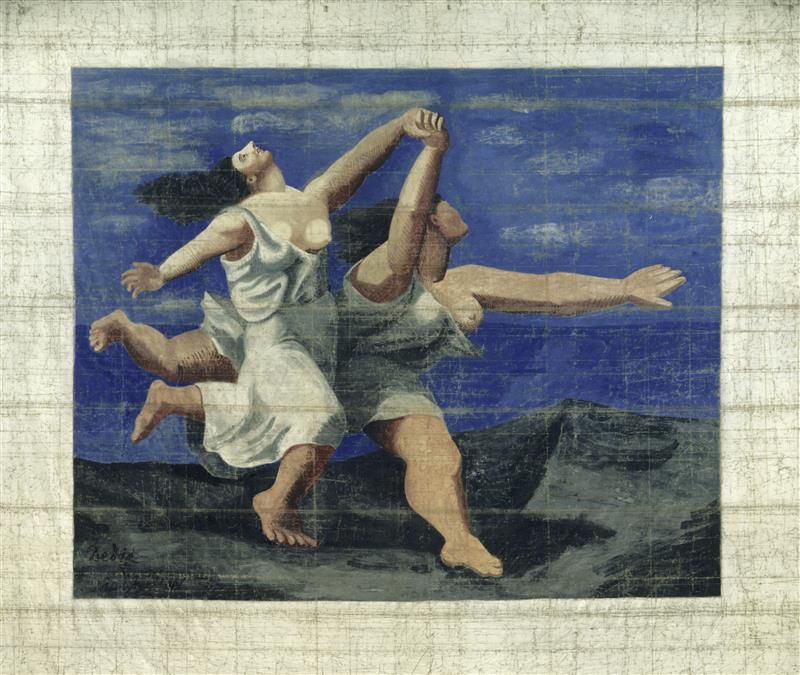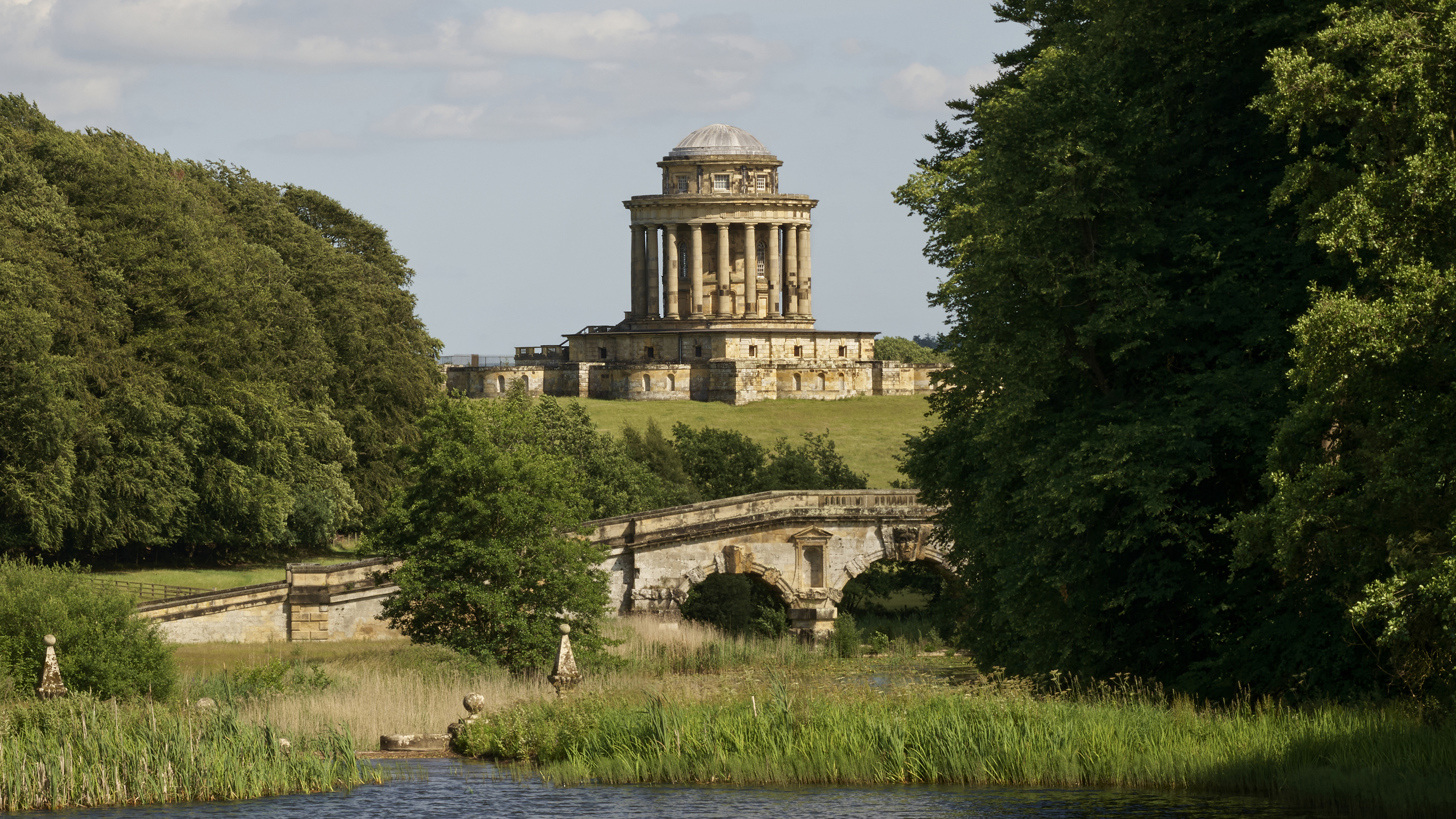A five minute guide to the new V&A East Storehouse’s treasures
Samurai swords and 350,000 books are just some of the curios in the new Victoria & Albert storehouse in Stratford, London, which is now open to the public.


Where does a storehouse end and a museum begin? The opening, on May 31, of the new V&A’s East Storehouse in Stratford, London, triggers the question, for this is much more than a repository for the museum’s bulging collections. Covering more than 172,000sq ft across four levels — an area nearly 18 times Wimbledon’s Centre Court — it is packed with frescos and stage costumes, samurai swords and 350,000 books — all available to the public.
The curios it holds are just as interesting as the other weird and wonderful things lurking in Britain's museum basements. ‘It’s the first time any museum has done anything this ambitious,’ says senior curator Georgia Haseldine. Together with 100 curated displays, the storehouse also offers an ‘order an object’ service: ‘If it’s stable enough and isn’t too fragile, you’ll be able to handle it.’
A post shared by Artsy (@artsy)
A photo posted by on
- Asked to choose a favourite from the Aladdin’s cave that is the Storehouse, Haseldine admits that she changes her mind every day. Today, it is a Vivienne Westwood raincoat from her Portrait collection, made with rubberised cotton in Jean-Honoré Fragonard’s Swarm of Cherubs print. ‘In the past 35 years, that rubberised cotton she used has completely adhered — so we’re showing it as it is now, almost like a board’
- Among the largest pieces on show is the Kauffman Office designed by Frank Lloyd Wright for department-store owner Edgar J. Kaufmann — his most complete interior found outside the US. ‘The marquetry mural that Wright makes [for Kauffman] is staggeringly beautiful,’ says Dr Haseldine
- The 17th-century colonnade from the fort at Agra, India, is a triumph of exquisitely carved floral designs inlaid with coloured stones. Dr Heseldine brought in a group of dancers to shoot a film there and used lighting to help them experience what the place would have looked like next to the river at Agra. ‘The whole colonnade came to life, shimmering with a kind of moonlight [and] all the precious stones iridescing’
- When Ballets Russes impresario Sergei Diaghilev visited the studio of Pablo Picasso, he fell for one of the paintings, The Two Women Running along the Beach — so he commissioned a gigantic copy of it to use as stage cloth. Picasso liked it so much that he signed it. Used for Le Train Bleu ballet, the cloth is so big that when the V&A displayed it in 2010, it took the museum two weeks, five riggers, 10 members of staff and a scaffolding tower to put it up. Yet, it is well worth the effort. ‘We all wish we were in a Fitzgerald novel,’ says Haseldine. ‘I just want to be at those parties on the Riviera and I feel like [the cloth] can transport us all back to that moment’
- The same sheen as mother of pearl, but at a fraction of a price: no wonder that the Victorians went wild for fish scales. The Storehouse has a tiara from about 1870–74 that looks a little like a string of delicate cherry blossoms. ‘I can’t quite imagine what it would feel like to be that bride: “I’m going to wear this tiara covered in fish scales”’, laughs Haseldine, ‘but also, you wouldn’t know what it was made of when you looked at it’

A Front cloth painted by Prince Alexander Schervachidze for the ballet Le Train Bleu, 1924, from a gouache by Pablo Picasso.
Exquisite houses, the beauty of Nature, and how to get the most from your life, straight to your inbox.
Carla must be the only Italian that finds the English weather more congenial than her native country’s sunshine. An antique herself, she became Country Life’s Arts & Antiques editor in 2023 having previously covered, as a freelance journalist, heritage, conservation, history and property stories, for which she won a couple of awards. Her musical taste has never evolved past Puccini and she spends most of her time immersed in any century before the 20th.
-
 The greatest flowers make the greatest art
The greatest flowers make the greatest artA search for still-life subjects led Kate Friend to some of the greatest gardens and gardeners in the country
-
 The Castle Howard Mausoleum, a building so beautiful 'you'd almost want to be alive when buried in it', is facing its own demise
The Castle Howard Mausoleum, a building so beautiful 'you'd almost want to be alive when buried in it', is facing its own demiseThe celebrated Castle Howard Mausoleum is a dynastic monument to the Howard family, but it needs further restoration if it is to survive. Christopher Ridgway tells its story; photography by Paul Higham.
-
 The greatest flowers make the greatest art
The greatest flowers make the greatest artA search for still-life subjects led Kate Friend to some of the greatest gardens and gardeners in the country
-
 Is the British Museum's attempt to save a Tudor-era pendant with links to Henry VIII proof that the institution is on the up?
Is the British Museum's attempt to save a Tudor-era pendant with links to Henry VIII proof that the institution is on the up?After years of neglect and controversy, Britain's premier cultural institution seems to be finding its feet again.
-
 Suit yourself: I’m a 49 year-old man-about-town and I’ve never owned a suit
Suit yourself: I’m a 49 year-old man-about-town and I’ve never owned a suitWhen Hugh Smithson-Wright turned up to Country Life's annual Gentleman's Life party sans suit, it sparked a passionate conversation about why the formal fashion just isn't for everyone.
-
 Meet the British perfumers squeezing landscapes into scents
Meet the British perfumers squeezing landscapes into scentsThe nuances of modern perfumery now allow a single drop to evoke an entire landscape. Amie Elizabeth White explores the native houses hitting the right notes
-
 This machine is what happens when the Rolls-Royce of motorbikes and the most innovative of watchmakers join forces
This machine is what happens when the Rolls-Royce of motorbikes and the most innovative of watchmakers join forcesBrough Superior and Richard Mille, two brands renowned for perfection, have created something that is exactly that.
-
 ‘Each one is different depending on what mood I’m in, how I'm feeling and how my energy is’ — meet the carver behind Westminster Hall's angel statues
‘Each one is different depending on what mood I’m in, how I'm feeling and how my energy is’ — meet the carver behind Westminster Hall's angel statuesBespoke woodcarver William Barsley makes unique scale replicas of the angels that gaze over Westminster Hall, the oldest part of the palace of Westminster.
-
 If chess is 'the supreme board game', then it deserves to be played on boards like these
If chess is 'the supreme board game', then it deserves to be played on boards like theseChess sets and backgammon boards are a familiar sight on drawing-room tables, but one expert Highland woodworker is refashioning their forms in beautiful new ways.
-
 A slick looking off-roader that's a far cry from its rustic rural roots — Volvo EX30 Cross Country
A slick looking off-roader that's a far cry from its rustic rural roots — Volvo EX30 Cross CountryThe latest iteration of Volvo's Cross Country is flashy, fast and stylish. But is that what a Volvo Cross Country is supposed to be?
